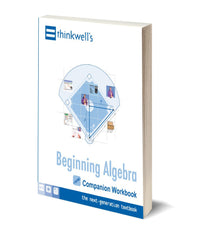
Beginning Algebra Online Course
$159.00
Thinkwell's Beginning Algebra with Professor Edward Burger
Beginning algebra is a developmental course taught at colleges to prepare students for college-level math. This course is a perfect supplement for college students already taking the course, or for preparing to take a college algebra course
Through Professor Burger's fun and effective videos, you can learn the tips and tricks you need to succeed in college math. Beginning Algebra includes printable full-color illustrated notes, automatically graded algebra problems with worked-out answers, and a glossary of mathematical terms, which makes learning beginning algebra online easy. No textbook required.
The workbook (optional) comes with lecture notes, sample problems, and exercises so that you can study even when away from the computer.





